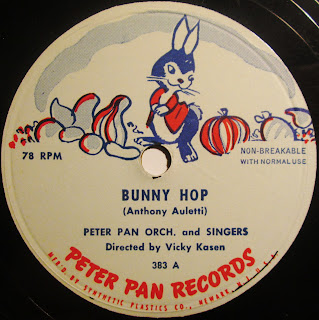Joyous Easter music, rescued from Workupload exile. As you can see, the bunnies are excited. A mix of secular and sacred, though many (most?) details of Easter were, at some point in time, religious. In All Around the Year (1994), Jack Santino (a former prof of mine) writes about Easter eggs as "natural symbols of birth, new life, resurrection, and renewal," and we won't even mention bunnies (rabbits) as symbols of fertility. Except, I just did. But Easter eggs, come 2024, are regarded as "secular" in nature. (Actually, most eggs have no professed religion.) Or an unpeeled egg, once peeled, can be regarded as a symbol of Christ's rebirth--a victory over death. It's your call.
Meaning that any and all controversy over religious holidays (at least in my culture) is a matter of sacred vs. popular rather than sacred vs. secular. Approximately 80 percent of U.S. citizens celebrate Easter, and it's closer to 90 percent for Christmas. Which means, obviously, that a hefty number of non-Christians are happily engaging in Christian events. This, of course, inevitably leads to debate over whether or not these holidays are, in fact, Christian. My take is that, if we celebrate them in the (so to speak) mode of Christianity, they are Christian. Historically, that is. This fits in with my "The past can't be conveniently jettisoned" cultural-history stance. To put it another way, Silent Night doesn't cease to celebrate the Nativity, even if sung by an atheist or a religiously-undecided person as part of the popular celebration. That is, unless the text is radically altered to eliminate that central reference--in which case, it's an utterly new number, since the removal of the Nativity theme would necessitate a title change and the elimination of "holy," among other details. It's enough to know that millions of Americans annually sing Christmas carols and hymns with little or no thought to the sacred nature of caroling. It's simply something people do during "the holidays."
As to whether the spring equinox, the winter solstice, and other vital planetary events are the property of a given faith, or any faith at all, my take (forgive me) is that the planetary events take precedent. Holy details are "scheduled" around the seasons, and obviously not vice versa, so...
How did I end up on that tangent? I guess I'm saying that, even as a Christian, I'm overjoyed by the fact of any Christian holiday pulling popular duty--i.e., becoming a holiday of and for the people. Such as Easter. Hence, I feel that How Great Thou Art conveys the joy of the event (birth, rebirth, the return of leaves and flowers, "longer" days) as legitimately as Eggbert, the Easter Egg, though I would argue that the former is a more inspired work of art.
And any excuse to put Eddie Brandt (of Spike Jones fame) and (His) Hollywood Hicks, Jerome Hines, Smith's Sacred Singers, "Hoppy" the Bunny, Ray Heatherand the Cincinnati Baptist College Quartet in the same playlist is an excuse to be cherished.
And the "Anthony Auletti" credit for Bunny Hop (by the Peter Pan Orch. and Singers) is actually, "Anthony, Auletti," but we believe in keeping typos as they originally appeared. And my all-time favorite gospel songwriter, Charles H. Gabriel, is represented by three selections, including the gorgeous 1925 Homer Rodeheaver--Mrs. William Asher duet, Love Led Him to Calvary. Incredibly vivid fidelity on a nearly 100 year old 78. And we close with two joyous Gabriel anthems, by way of conveying the joy of the season. And nothing says "joy" quite like joyousness.
DOWNLOAD: Easter 2024
Peter Cotton Tail--Meadowlarks (Irene Records)
Old Rugged Cross--Mac MacFarland--(Same)
Easter Parade--Eddie Brandt and (His) Hollywood Hicks, V: Ruthie James (Same)
Christ Arose--Collegiate Choir, 1920
Easter Bunny Polka--Eddie Brandt and (His) Hollywood Hicks, V: Eddie Brandt and Ruthie James (Irene Records)
Jesus Died for Me--Smith's Sacred Singers, 1929
Are You Washed in the Blood of the Lamb--Smith's Sacred Singers, 1929
Power in the Blood--The Cincinnati Baptist College Quartet, c. 1971
How Great Thou Art--Jerome Hines, 1965
The Old Rugged Cross--Jerome Hines, 1965
Unknown Choir, Word Records--He Lives
He Arose--Haydn Quartet With Orchestra, `1908
Victory in Jesus--Church of the Nazarene Male Quartet, 1959
Bunny Hop--Peter Pan Orch. and Singers, Dir. by Vicky Kasen (1955)
Love Led Him to Calvary (Webster-Gabriel)--Mrs. William Asher-Home Rodeheaver, With Pipe Organ, 1925
Funny Little Bunnies--The Cricketts, Feat. "Hoppy" the Bunny, Peter Pan Orch.
Reapers Are Needed (Charles H. Gabriel)--A.T. Humphries and Lee College Choir, c. 1959
Awakening Chorus (Charles H. Gabriel)--Same
Peter Cottontail--Ray Heatherton (The Merry Milkman), 1951
Eggbert, the Easter Egg--Same
Lee











